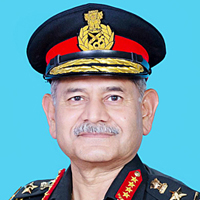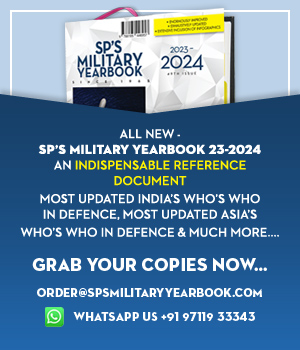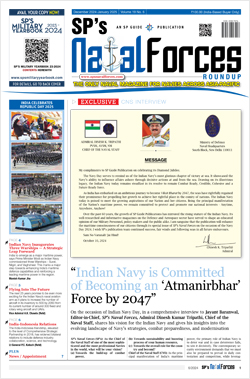INDIAN ARMED FORCES CHIEFS ON OUR RELENTLESS AND FOCUSED PUBLISHING EFFORTS

The insightful articles, inspiring narrations and analytical perspectives presented by the Editorial Team, establish an alluring connect with the reader. My compliments and best wishes to SP Guide Publications.

"Over the past 60 years, the growth of SP Guide Publications has mirrored the rising stature of Indian Navy. Its well-researched and informative magazines on Defence and Aerospace sector have served to shape an educated opinion of our military personnel, policy makers and the public alike. I wish SP's Publication team continued success, fair winds and following seas in all future endeavour!"

Since, its inception in 1964, SP Guide Publications has consistently demonstrated commitment to high-quality journalism in the aerospace and defence sectors, earning a well-deserved reputation as Asia's largest media house in this domain. I wish SP Guide Publications continued success in its pursuit of excellence.
- MoD initiates comprehensive review of Defence Acquisition Procedure 2020, pushes for defence reforms
- G7: The Swansong
- Kalinga Connect: South Asia to Polynesia
- Advanced MRSAM for India for a greater firepower
- Must Credit DRDO for Operation Sindoor, now what is next for defence R&D?
- Operation Sindoor | Day 2 DGMOs Briefing
- Operation Sindoor: Resolute yet Restrained
Exercise
Exercise Paschim Leher
The nine-day long Exercise Paschim Leher tested the combat readiness of the Command at sea, including mobilisation and operational synchronisation
medical abortion
abortion pill usa legal
The Western Naval Comand on November 11, 2016, concluded a major operational exercise conducted at the vast expanse of the Arabian Sea. Although such exercise is carried annually during the campaign season in both eastern and western theatres, the scale of this year’s exercise was upped substantially, owing to prevailing tense environment in the western theatre. The nine-day-long exercise, which began on November 2, 2016, was thus appropriately code-named as Exercise Paschim Leher (XPL). XPL was configured to extensively test the combat readiness and efficiency of the Command at sea, including the vital aspects of mobilisation and operational synchronisation.
All components in the three dimensions of the naval warfare were enshrined in XPL with the participation of large number of ships, submarines and aircraft. The exercise comprised both the operational and tactical phases. Various manoeuvres and deployments were exercised, in a networked environment, with the participation of a large number of both ancillary and shore support units and agencies also participating.
As is customary the coordinated exercise also saw participation of Indian Air Force, with a number of aircraft, and Indian Coast Guard units. Proactive operations as well as defensive operations were exercised, including various contingencies off the coasts of Gujarat, Maharashtra, Goa and Karnataka. XPL most successfully accomplished its operational objectives.





